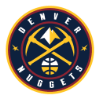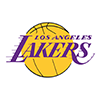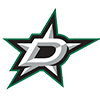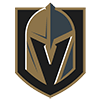It's always a highlight of the season. Draft day brings an infusion of new, and hopefully exciting, arms into professional baseball, and into the spotlight for fantasy baseball junkies like us. I settled in with ice cold beverages and snacks, notebook in and with the pitchers I wanted to keep tabs on. Where would they go? What would the film clips show? What would other analysts have to say? Ahhh, what a night! So, let's take a look:
What Should You Watch For on Draft Day?
To begin with, one of the first things I determine in my own mind is the level of available talent – specifically pitching talent. I also tend to subdivide it between college and high school talent because college talent tends to be more prepared for the professional game, both because of their experience, and their physical development. In my opinion, even top shelf high school hurlers can be much more difficult to project. A high school pitcher who looks long and wispy today, could look, and pitch, a lot different as they mature and fill out over the next few years. The crystal ball can often be a little foggy when you are trying to figure out what the future will hold for an 18-year-old.
While I certainly give a close look to high schoolers, there are other reasons I spend a higher percentage of my time evaluating college arms. Because they are older and have often been engaged in pitching within programs that
It's always a highlight of the season. Draft day brings an infusion of new, and hopefully exciting, arms into professional baseball, and into the spotlight for fantasy baseball junkies like us. I settled in with ice cold beverages and snacks, notebook in and with the pitchers I wanted to keep tabs on. Where would they go? What would the film clips show? What would other analysts have to say? Ahhh, what a night! So, let's take a look:
What Should You Watch For on Draft Day?
To begin with, one of the first things I determine in my own mind is the level of available talent – specifically pitching talent. I also tend to subdivide it between college and high school talent because college talent tends to be more prepared for the professional game, both because of their experience, and their physical development. In my opinion, even top shelf high school hurlers can be much more difficult to project. A high school pitcher who looks long and wispy today, could look, and pitch, a lot different as they mature and fill out over the next few years. The crystal ball can often be a little foggy when you are trying to figure out what the future will hold for an 18-year-old.
While I certainly give a close look to high schoolers, there are other reasons I spend a higher percentage of my time evaluating college arms. Because they are older and have often been engaged in pitching within programs that offer top caliber coaching, they tend to be much more refined. The raw skills found in a high school star are transferable in most cases, but the college arms are closer to being finished products, and with the money involved today, how soon a draft choice can contribute is a big factor. If you have a high 90's fastball and you can consistently throw it for strikes in high school, you will probably be pretty successful some day, but the college arms are more likely to be useful as early as later this season, or at least relatively soon. Keep that in mind. Some of these guys will be fantasy relevant before you know it.
And, there is one other factor that comes into play with high school arms. Last week I discussed the growing incidence of Tommy John surgery, in particular among younger pitchers. It occurs to me that the more power you see in a high school arm, the more mileage there will be on the elbow ligaments. The same holds true for college arms too, but a high school pitcher with pro stuff has probably already stressed his throwing elbow considerably. If high mileage is an indicator of likely Tommy John surgery, the blue chip high school kids may be on that path, and as I mentioned last week, pro organizations seem to be more and more accepting of that. More and more they seem to view the surgery as resetting the clock, turning the odometer back on that golden arm. A lot of pitchers in this draft have already been there. It was interesting to see where they went.
Overall, I would say this draft had a lot of raw pitching talent, but was not really loaded with the elite level arms we have seen over the past few years. There's a good chance several of these guys will develop, but I don't recall so many pitchers being discussed as both early round picks, and possibly being destined for the bullpen. Late inning relievers with exceptional stuff and credentials have always been of interest to teams, but they have always been early round exceptions. Teams drafted this year with the belief many of the top choices might never start at the major league level. That's a game changer.
So, here are a few high ceiling arms I think you should add to your watch list:
- The first pitcher off the board at number four overall was one of those will he start or will he relieve guys. Dillon Tate was drafted on his arm. A college player, he has an explosive fastball that can touch 98 mph, and he has a good slider to go with it. He started this year, but saved 12 games the year before so relief work is not new to him. I'm pretty sure the Rangers want to see if they can shine up his change-up and make him a big league starter, but that right arm was his ticket.
- The guy I had as my top college pitcher went to the Twins sixth overall. A lefty with a lot of stuff, Tyler Jay was a reliever this year at the University of Illinois, but like Tate, I am certain the Twins will want to see if he can make it as a starter. Interestingly, he could be the first pitcher from this draft to make the big team. It would be as a reliever if the Twins stay in it and need a power arm for late inning work. He to touches 98 mph, and as a lefty, already shows decent command. It will be worth watching to see how the Twins try to develop him. Later the Twins would double-dip and pick yet another big power arm, Kyle Cody, who could potentially boost their bullpen this season.
- My top high school arm dropped to 27th overall and went to Colorado. I love the projectability of Mike Nikorak who at 6'5" and 225 pounds is already well put together. And, his physical build isn't all he has. He pitches on a steep downward plane, sits comfortably at 93-96 mph, and he already has a polished change-up. That is the kind of description you like to see for a blue chip college arm. I would have liked to have seen him somewhere other than Colorado, but love his future prospects. He could move through their system quickly.
- My top high school arm was close between Nikorak and Ashe Russell, another right-hander with lots of arm who went 21st overall. Russell pitched for Cathedral High School in Indianapolis so I am more familiar with him, and he has both talent and maturity for a high school kid. In a nice story line, the Royals took Russell and then 12 picks later took right-hander Nolan Watson who pitched for Lawrence North High School, also in Indianapolis. Watson has solid credentials too, with four well-developed offerings for his age. The Royals' Midwest area scout was clearly busy this past season.
- Vanderbilt shortstop Dansby Swanson was the first overall pick, but they had two notable pitchers go early as well. A lot of people expected Carson Fulmer to be the first pitcher off the board, but he was the third pitcher to go, eighth overall to the White Sox, while Vandy teammate Walker Buehler was the 24th pick going to the Dodgers. Fulmer may be the closest of the college arms to reach the majors as a starter, but he has some work to do. He has the tools but needs to work on his secondary stuff. Buehler may be even more interesting to me, and probably would have gone much higher if it weren't for some elbow soreness he experienced this year. He pitched through it, but it could be a warning sign.
- Last on my quick spin through the draft is the pitcher I think might be a steal. The Blue Jays took John Harris from Missouri State 29th overall and I was thinking he might go in the 10-15 range. Not the big name school, but they have had nine pitchers from the last 10 drafts make it to the majors. He doesn't have the ceiling of some of the bigger arms, he sits low 90's, but he has a full repertoire of four pretty well developed pitches so he could be major league ready fairly soon.
Obviously there were a lot of other pitchers worth monitoring – guys like Kolby Allard (14th overall to the Braves) who had a stress fracture in his back that no doubt made teams nervous, and a former first rounder who didn't sign because elbow issues were discovered Brady Aiken (17th overall to Cleveland) who has had Tommy John surgery.
Some Notable Rotation Ramblings:
- There was no question Chris Archer had the tools. He has an excellent fastball and one of the nastiest sliders in baseball. Now he believes it and throws his jaw-droppers all over the zone. He recently did something amazing (as in first time in the modern era): three straight starts with 10+ strikeouts and no walks. Yikes.
- My guy for the National League side of the coin is still Johnny Cueto. I like watching him pitch as much as any arm in the game, and I don't own him in any league I play in which really annoys me (he was protected in every league I think so I couldn't buy him and his numbers so far make a deal difficult).
- Baltimore's Miguel Gonzalez left his last start with a strained groin. If he's going to miss any time, surely the Orioles will do the right thing and permanently install Kevin Gausman into their rotation. He's the best pitcher in the organization, and even though he has more to learn, the yo-yo game is only holding him back.
- On Tuesday night the Giants' Chris Heston tossed the first no-hitter of 2015, with a real gem. He didn't walk a batter and struck out 11 Mets. Sorry, this is one of those "even a blind dog finds a bone" moments. Heston isn't horrible, but he generally has pretty pedestrian stuff. If you own him, hang out the for sale sign.
- I'll be anxious to see Matt Moore again after so long. He was once very near the top of my prospect list with some of the best stuff I have seen. The Rays say he will make a couple more rehab starts before presumably joining their rotation. Rust could impact his command, and they'll be cautious, but he could shine.
Endgame Odyssey:
When Odysseus made his odyssey following the Trojan War, he experienced some stormy situations, and periods of relative calm. In our ongoing Endgame Odyssey, the storm warnings are definitely up. Fernando Rodney received a vote of confidence, and after a couple more rocky outings, he stepped aside. Carson Smith gets the first call, but I don't think he'll be the fulltime closer, and I expect to see Rodney with the job again before long. Tampa Bay became a source of head-scratching. Brad Boxberger got knocked around and was then found to have some triceps woes, so Kevin Jepsen came out of nowhere to get back-to-back save opportunities and three in a row. I still think Jake McGee gets the job when they feel he's ready, but this is not guaranteed, especially since the Rays are under new management since McGee was the guy. It appears Hector Rondon will get some innings with less pressure for the Cubs. Look for Pedro Strop to step in, at least for the short term, with Jason Motte the dark horse candidate. Note, the Cubs just inked free-agent Rafael Soriano who could be a closing option too, once he has some minor league innings under his belt. Also of interest, Andrew Miller heads to the disabled list with a forearm injury so Dellin Betances steps in to close. No word yet how long Miller will be away. The Jays, and therefore closer Brett Cecil, haven't experienced a save opportunity since May 4 – not one. That is almost unbelievable.






































